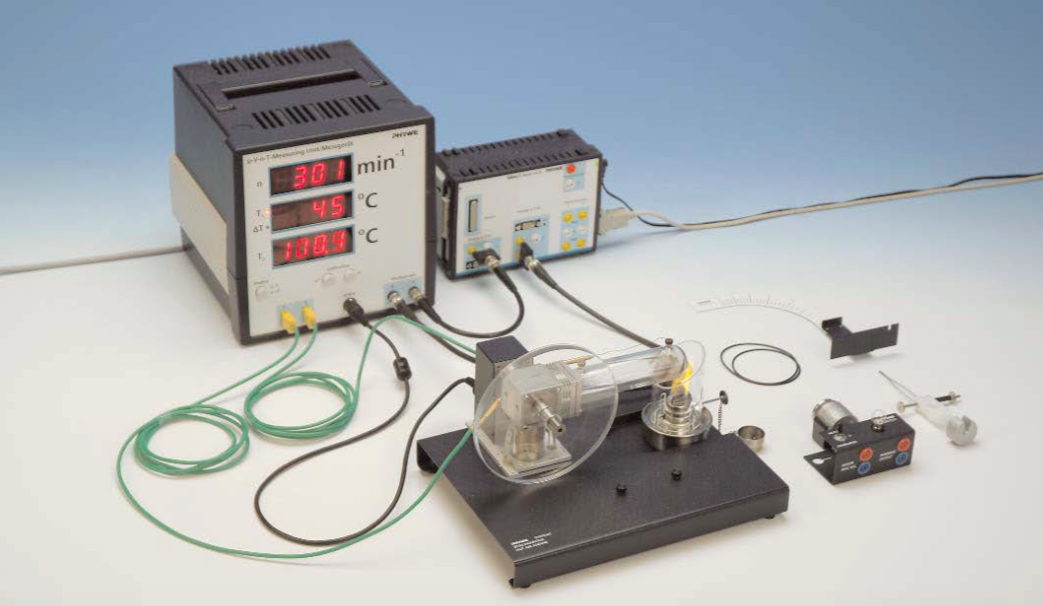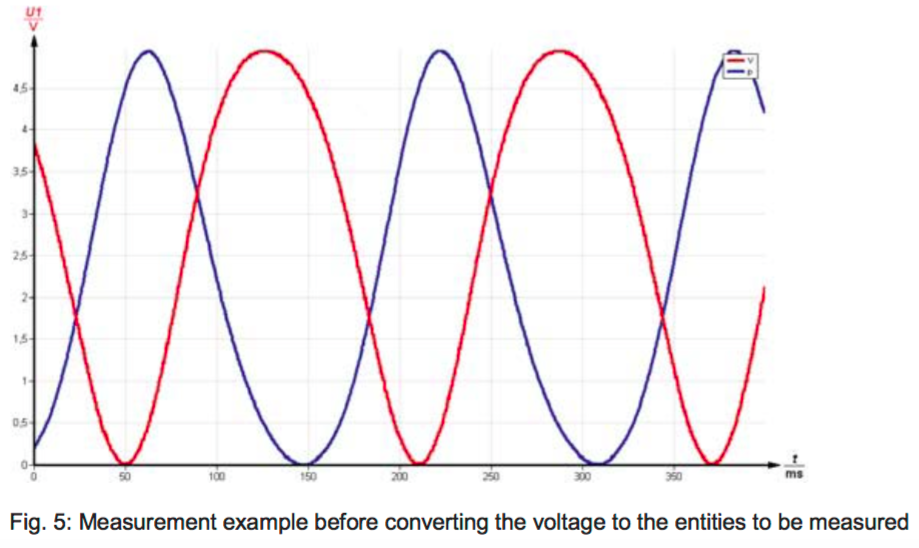Item no.: P2360415
Principle
The Stirling engine is submitted to a load by means of an adjustable torquemeter, or by a coupled generator. Rotation frequency and temperature changes of the Stirling engine are observed. Effective mechanical energy and power, as well as effective electrical power, are assessed as a function of rotation frequency. The amount of energy converted to work per cycle can be determined with the assistance of the pV diagram. The efficiency of the Stirling engine can be estimated.
Tasks
- Determination of the burner’s thermal efficiency
- Calibration of the sensor unit.
- Calculation of the total energy produced by the engine through determination of the cycle area on the oscilloscope screen, using transparent paper and coordinate paper.
- Assessment of the mechanical work per revolution, and calculation of the mechanical power output as a function of the rotation frequency, with the assistance of the torque meter.
- Assessment of the electric power output as a function of the rotation frequency.
- Efficiency assessment.
What you can learn about
- First and second law of thermodynamics
- Reversible cycles
- Isochoric and isothermal changes
- Gas laws
- Efficiency
- Stirling engine
- Conversion of heat
- Thermal pump
Software included. Computer not provided.


